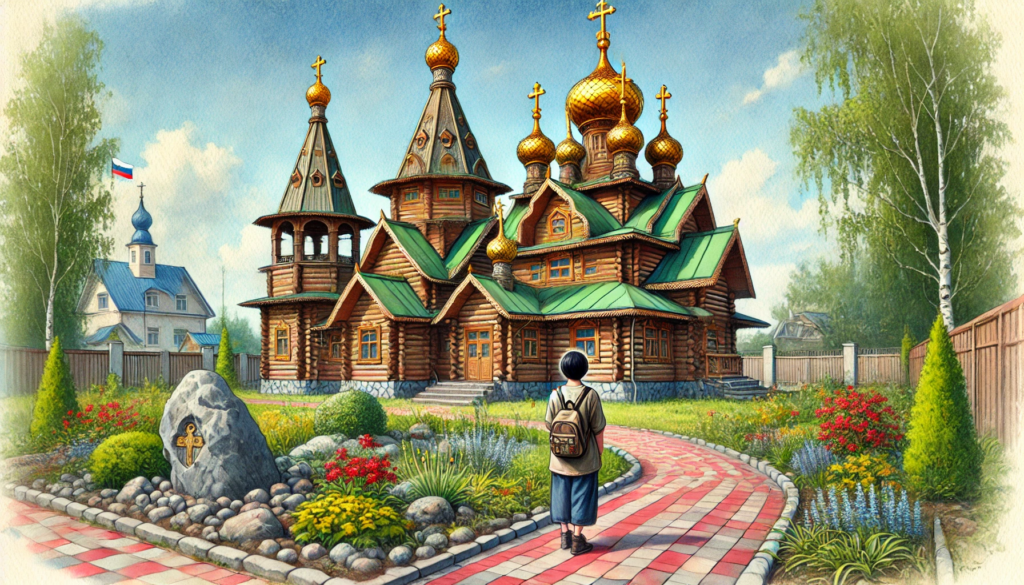ChatGPT:
Yuzhno-Sakhalinsk is the administrative center and largest city of Sakhalin Oblast, located on Sakhalin Island in Russia’s Far East. It lies approximately 25 kilometers north of the island’s southern coast and has developed as a hub for administration, transportation, and industry.
Origin and Early History
• Indigenous Beginnings: The area was originally inhabited by the Ainu, Nivkh, and Orok indigenous peoples, who lived off fishing, hunting, and reindeer herding.
• Russian and Japanese Claims: Russia began asserting control over Sakhalin in the early 19th century, although Japan also claimed the island. The Treaty of Shimoda (1855) allowed joint occupation, but disputes persisted.
• Karafuto Period: After the Treaty of Portsmouth (1905) ended the Russo-Japanese War, the southern half of Sakhalin, including what is now Yuzhno-Sakhalinsk, was ceded to Japan. The Japanese renamed the city Toyohara (豊原) and developed it as the capital of Karafuto Prefecture.
Japanese Rule (1905–1945)
Under Japanese governance, Toyohara developed into a modern administrative center with Western-style infrastructure, schools, and public buildings. Japanese settlers contributed to agriculture, fisheries, and forestry industries, laying the groundwork for urban development.
Post-War Period and Soviet Rule (1945–1991)
• After World War II, the Soviet Union seized control of the entire Sakhalin Island and the Kuril Islands in 1945.
• Toyohara was renamed Yuzhno-Sakhalinsk (literally “South Sakhalinsk”) and incorporated into the Russian Soviet Federative Socialist Republic (RSFSR).
• During the Soviet era, Yuzhno-Sakhalinsk became a base for industrialization, especially in oil, gas, timber, and fisheries. Many Japanese structures were replaced, and Russian infrastructure was expanded.
Modern Development (1991–Present)
• With the collapse of the Soviet Union in 1991, Yuzhno-Sakhalinsk became part of the Russian Federation.
• The oil and gas boom in the 1990s and 2000s, driven by offshore projects like Sakhalin-1 and Sakhalin-2, revitalized the city’s economy and attracted foreign investment, particularly from ExxonMobil and Shell.
• Today, Yuzhno-Sakhalinsk is a center for energy production, trade, and transportation, connecting Russia with Japan, South Korea, and China.
Key Features
• Cultural Landmarks: The Sakhalin Regional Museum, housed in a former Japanese building, highlights the island’s indigenous and colonial history.
• Nature and Tourism: Proximity to Mount Gorny Vozdukh makes it popular for hiking and skiing.
• Infrastructure: It features modern amenities alongside remnants of Japanese and Soviet architecture.
Population and Culture
The city has a population of about 180,000 and reflects a mix of Russian, indigenous, and Asian influences. It continues to grow as an international business hub while preserving its historical and cultural heritage.
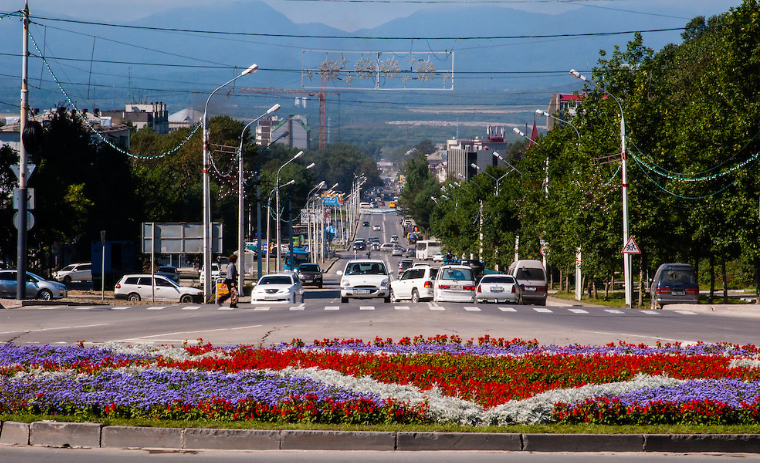
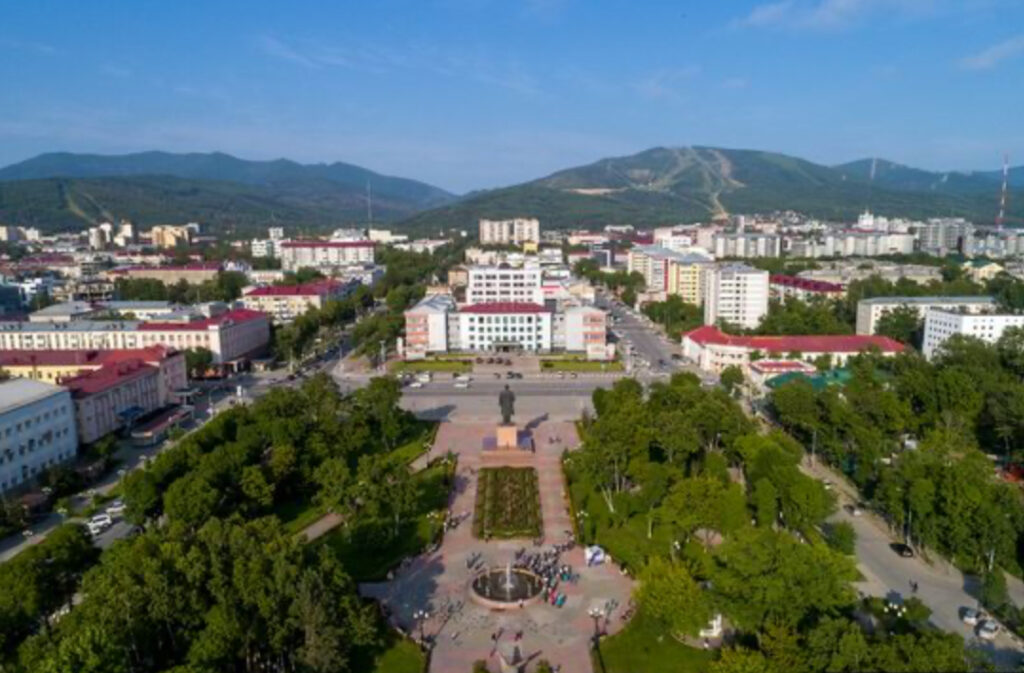
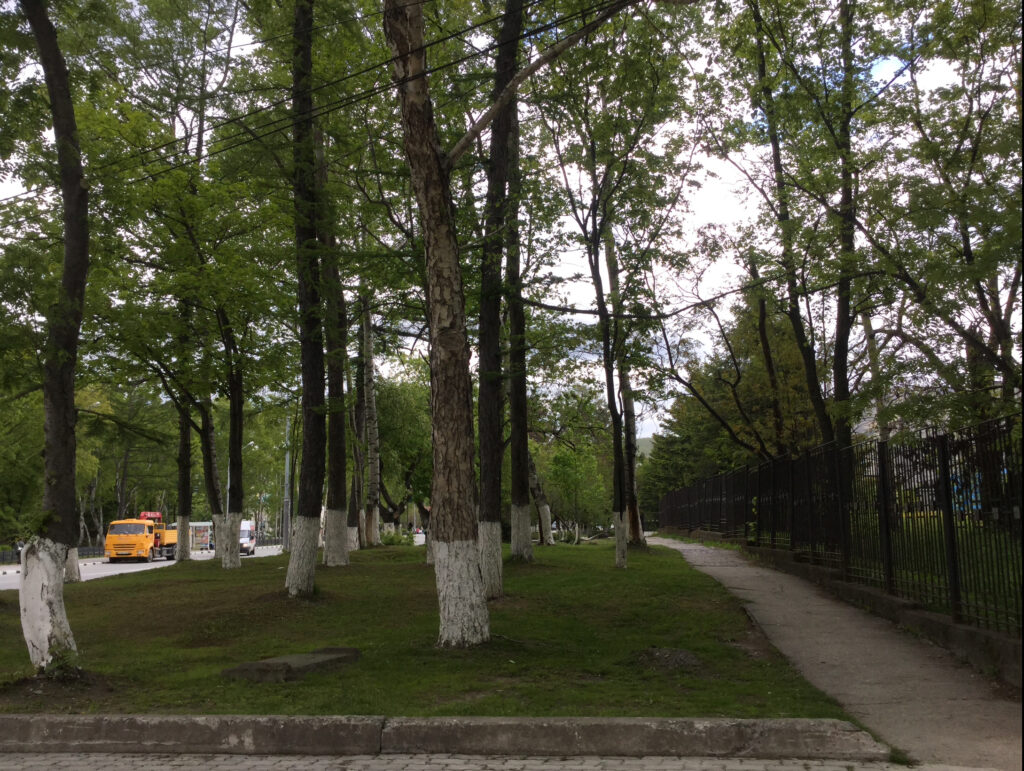
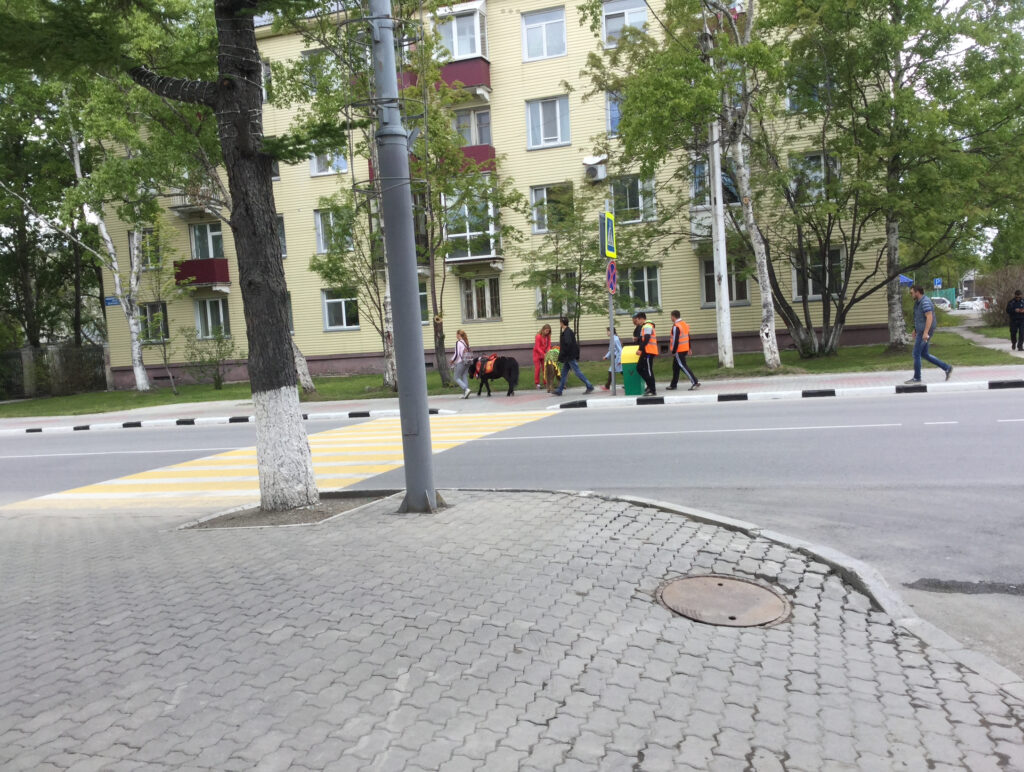
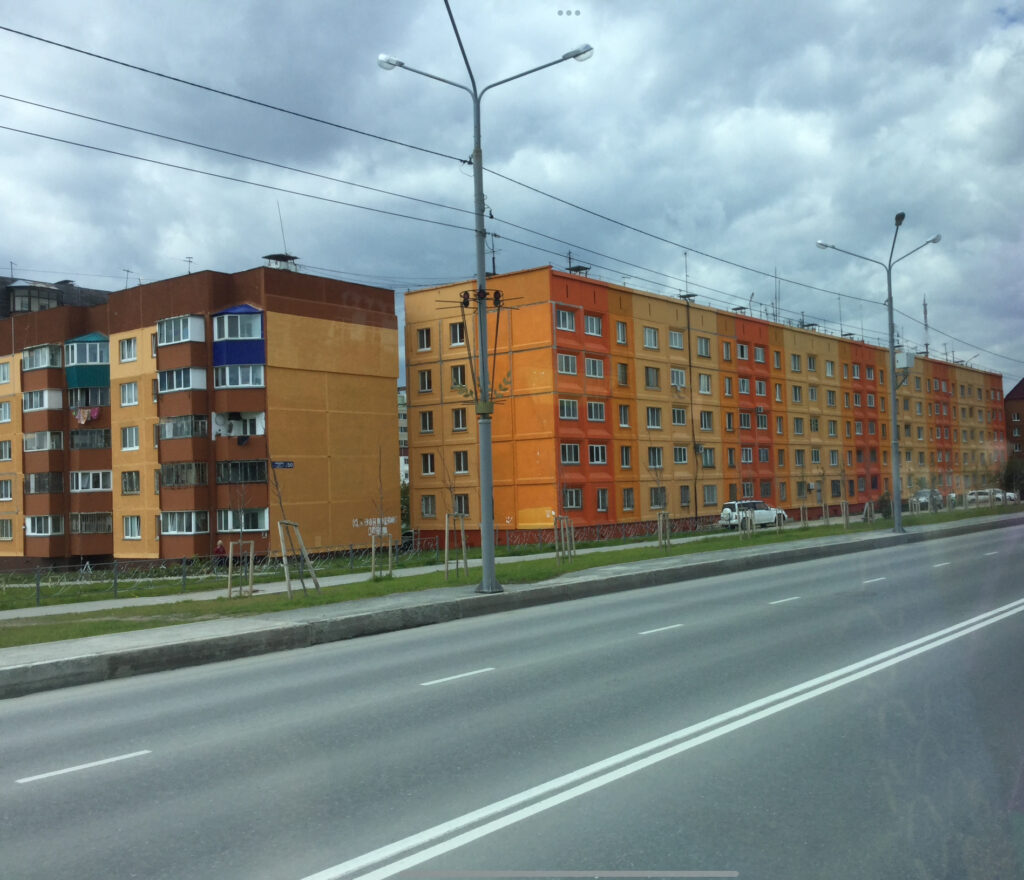
Here is a list of landmarks and attractions in Yuzhno-Sakhalinsk:
Historical and Cultural Landmarks
1. Sakhalin Regional Museum (Kraevedchesky Museum)
• Housed in a former Japanese building (built in 1937).
• Features exhibits on indigenous cultures, Japanese history, and natural history.
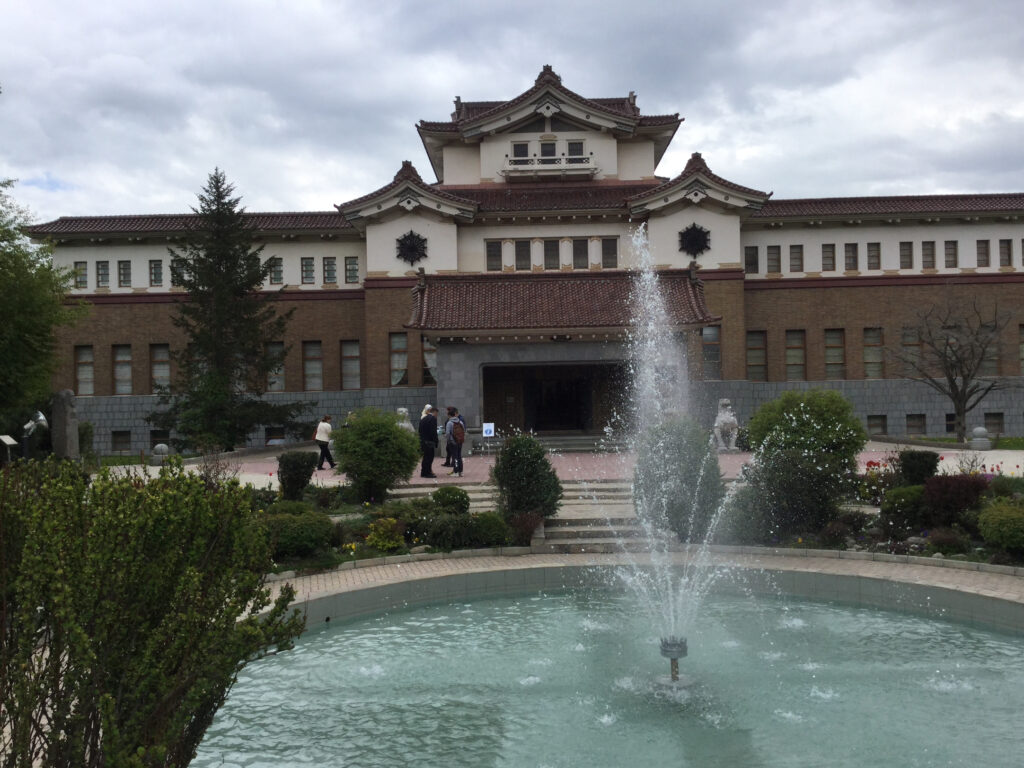
2. Museum of Local Lore
• Focuses on the city’s history, including artifacts from the Russian and Japanese eras.
3. Chekhov Book Museum
• Dedicated to Anton Chekhov, who visited Sakhalin in 1890 to study prison conditions.
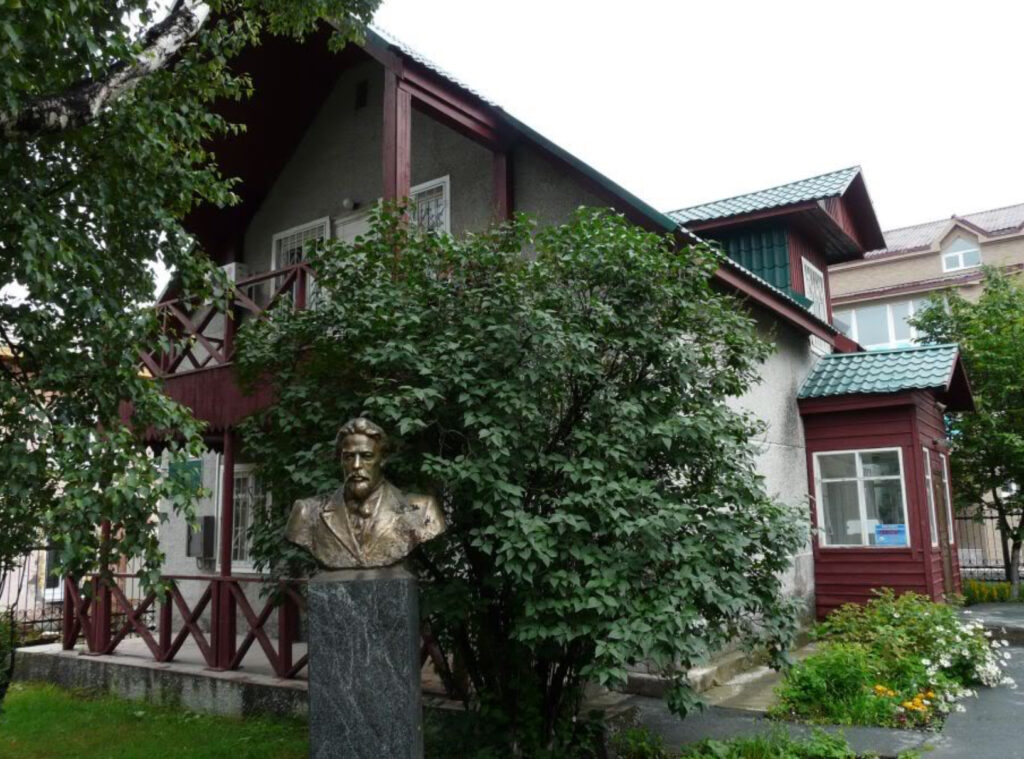
4. Victory Square (Ploshchad Pobedy)
• Soviet-era monuments and an eternal flame honoring WWII soldiers.
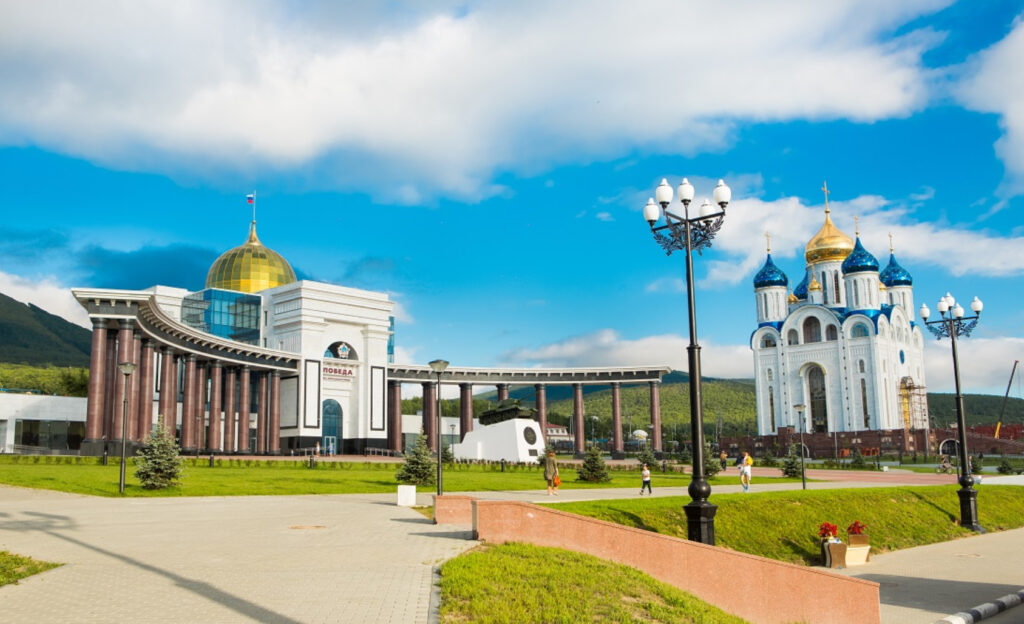
5. Memorial Complex in Honor of Sakhalin Defenders
• Commemorates soldiers who defended the island during WWII.
6. Cathedral of the Nativity (Sobor Rozhdestva Khristova)
• A stunning Russian Orthodox church with golden domes.
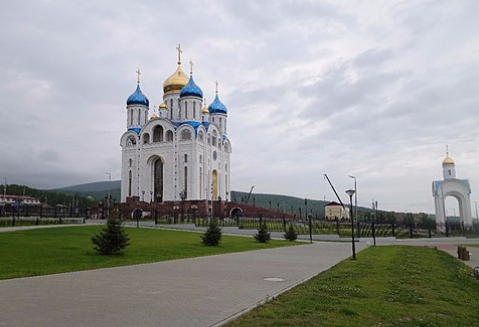
7. Gagarin Park
• Named after cosmonaut Yuri Gagarin, this park features amusement rides, walking paths, and sculptures.
• Ideal for family outings and relaxation.
Natural Attractions
8. Mount Gorny Vozdukh
• A ski resort in winter and a hiking destination in summer.
• Offers panoramic views of the city and surrounding landscapes.
9. Lake Tunaicha
• A scenic lake perfect for fishing, birdwatching, and nature photography.
10. Susunai Bay
• Coastal area with dramatic scenery and opportunities for beach walks.
11. Tikhaya Bay
• A remote and beautiful bay known for its cliffs and marine life.
Architectural and Modern Highlights
12. Japanese Architecture Remnants
• Buildings and structures reflecting the city’s Japanese-era influence, including old administrative offices.
13. Railway Museum
• Displays historic trains and railway equipment.
• Highlights the importance of rail transport in the region’s development.

14. Sakhalin Puppet Theater
• A charming venue offering performances, especially for children.
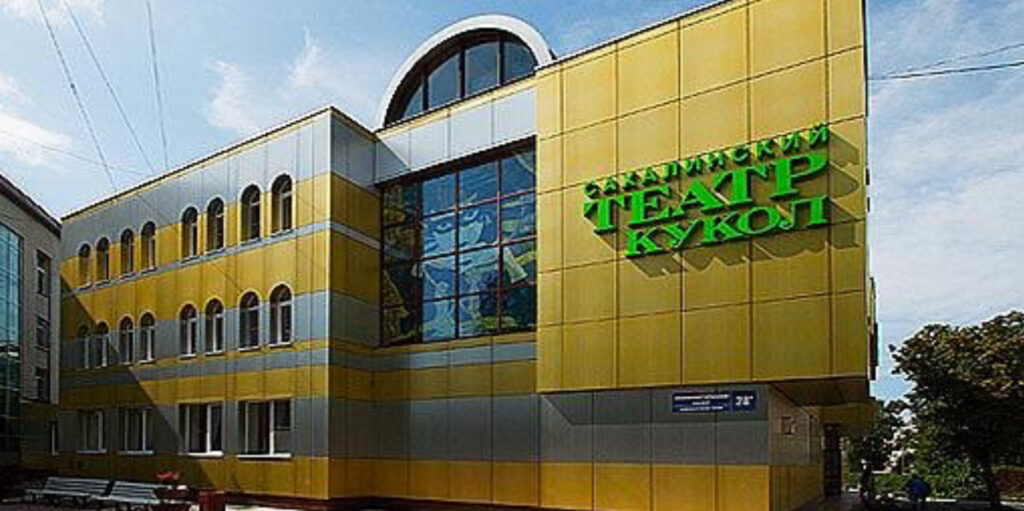
Here are some natural and outdoor activities near Yuzhno-Sakhalinsk:
Hiking and Mountain Activities
1. Mount Gorny Vozdukh
• Activities: Skiing, snowboarding (winter), hiking, and paragliding (summer).
• Highlights: Stunning views of the city and surrounding landscapes.
2. Mount Bolshevik (15 km from the city)
• Activities: Hiking and trekking.
• Highlights: Trails with scenic views and opportunities to observe local flora and fauna.
3. Mount Krasnaya (20 km southeast)
• Activities: Moderate hiking routes and picnicking.
• Highlights: Panoramic views and beautiful wildflowers in summer.
Lakes and Water Activities
4. Lake Tunaicha (Approx. 60 km southeast)
• Activities: Fishing, birdwatching, and kayaking.
• Highlights: Calm waters surrounded by forests—ideal for photography and relaxation.
5. Lake Busse (Approx. 100 km south)
• Activities: Oyster and shellfish harvesting, boat rides, and fishing.
• Highlights: Famous for seafood lovers and wildlife observation.
6. Susunai River (Near the city)
• Activities: Fishing and riverside walks.
• Highlights: Popular for salmon fishing during the spawning season.
Coastal Adventures
• Activities: Easy hiking and cycling.
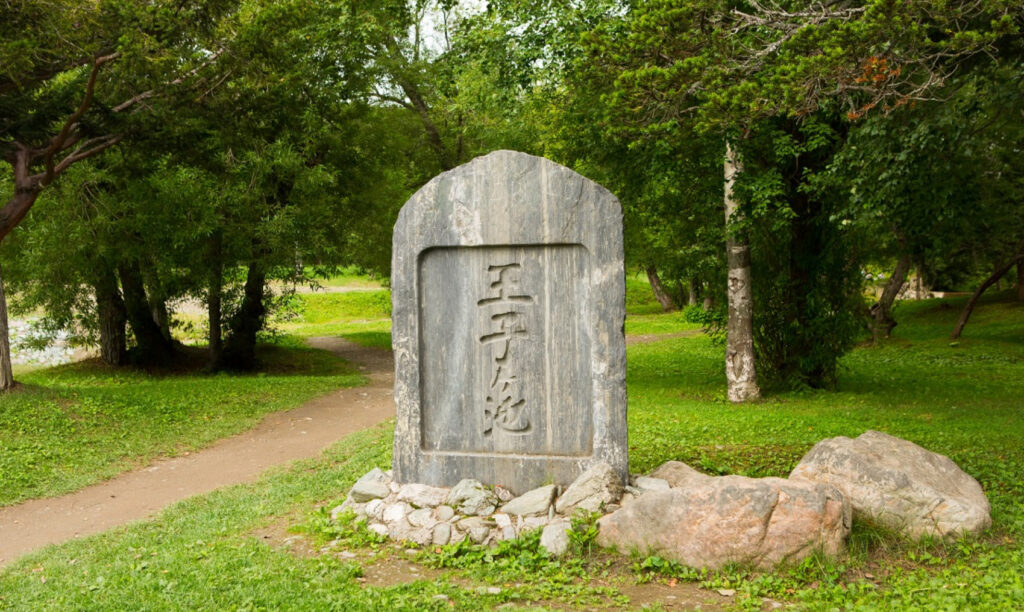
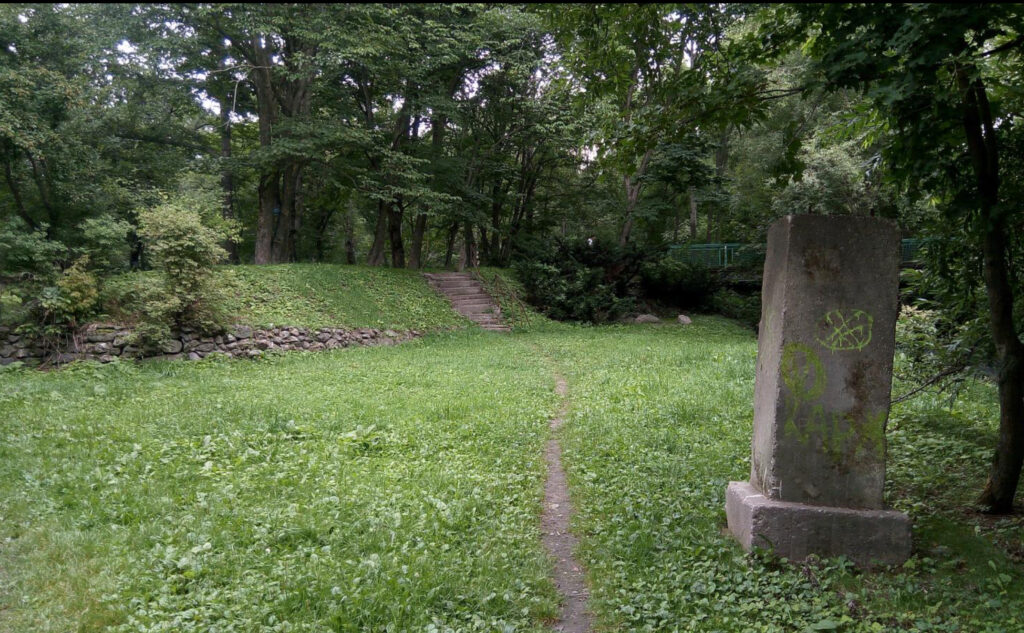
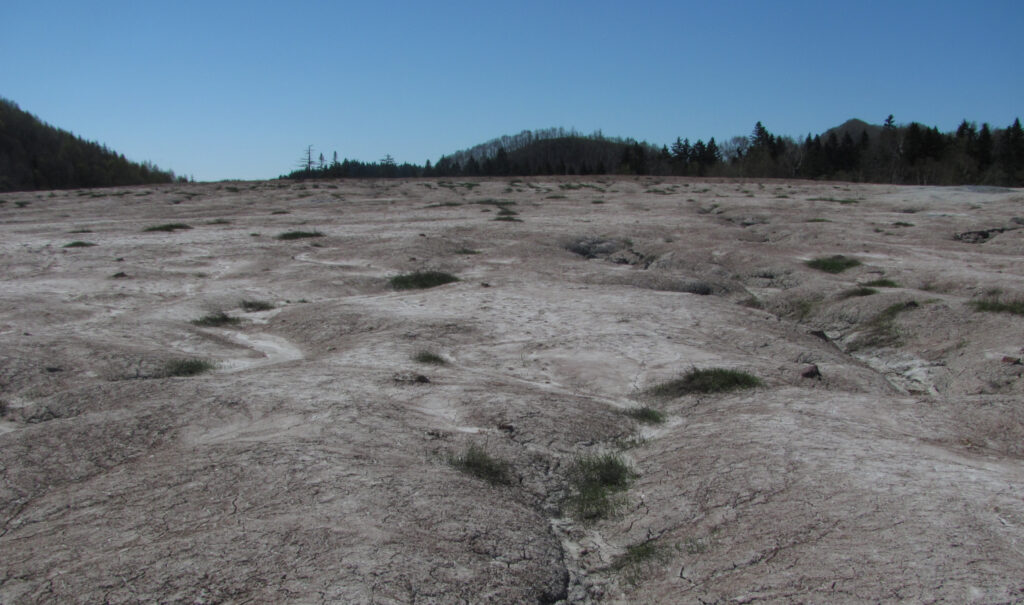
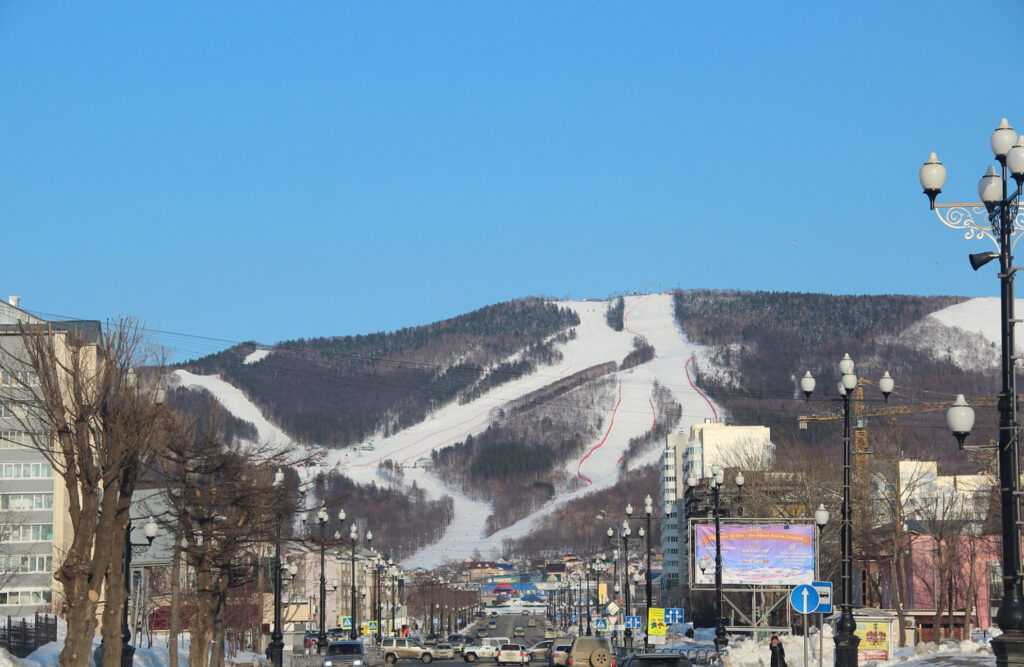
One-Day Itinerary for Yuzhno-Sakhalinsk
Theme: Explore history, nature, and local cuisine.
Morning
9:00 AM – Breakfast at Café Bukhta
• Start your day with a hearty breakfast featuring blini (Russian pancakes) topped with red caviar and sour cream, or try a local smoked salmon sandwich.
• Pair it with Russian-style coffee or herbal tea.
10:00 AM – Sakhalin Regional Museum (Kraevedchesky Museum)
• Explore exhibits on indigenous Ainu culture, Japanese-era history, and natural history.
• Admire the Japanese-style building, which is itself a historical landmark.
11:30 AM – Victory Square (Ploshchad Pobedy)
• Walk around this central square featuring WWII monuments and the eternal flame.
• Take photos of Soviet-era sculptures and memorials.
Midday
12:30 PM – Lunch at Koriya House (Korean-Russian Fusion Restaurant)
• Sample Sakhalin-style Korean dishes, reflecting the region’s Korean influence, such as kimchi soups, spicy fish stews, and marinated crab.
2:00 PM – Cathedral of the Nativity
• Visit this iconic Russian Orthodox cathedral with golden domes and colorful frescoes.
• Spend time enjoying the peaceful gardens surrounding the church.
2:45 PM – Gagarin Park (Next to the cathedral)
• Stroll through this green space featuring walking trails, ponds, and sculptures.
• Relax by the fountains or explore the small amusement park if traveling with children.
Afternoon
3:30 PM – Mount Gorny Vozdukh (Short drive or cable car ride)
• Ride the cable car to the top for panoramic views of the city and surrounding mountains.
• Enjoy a short hike or simply take in the scenery.
• Optional: If visiting in winter, consider light skiing activities.
5:30 PM – Return to the City Center
• Stop at the Chekhov Book Museum if time permits, dedicated to Anton Chekhov’s visit to Sakhalin.
Evening
6:30 PM – Dinner at Sakhalin Sapporo (Seafood Specialty Restaurant)
• Try local seafood dishes like kamchatka crab, scallops, and grilled salmon.
• End with syrniki (Russian cheese pancakes) for dessert.
8:00 PM – Leisurely Walk in the City Center
• Enjoy the evening ambiance by exploring the central streets, souvenir shops, and illuminated landmarks.
